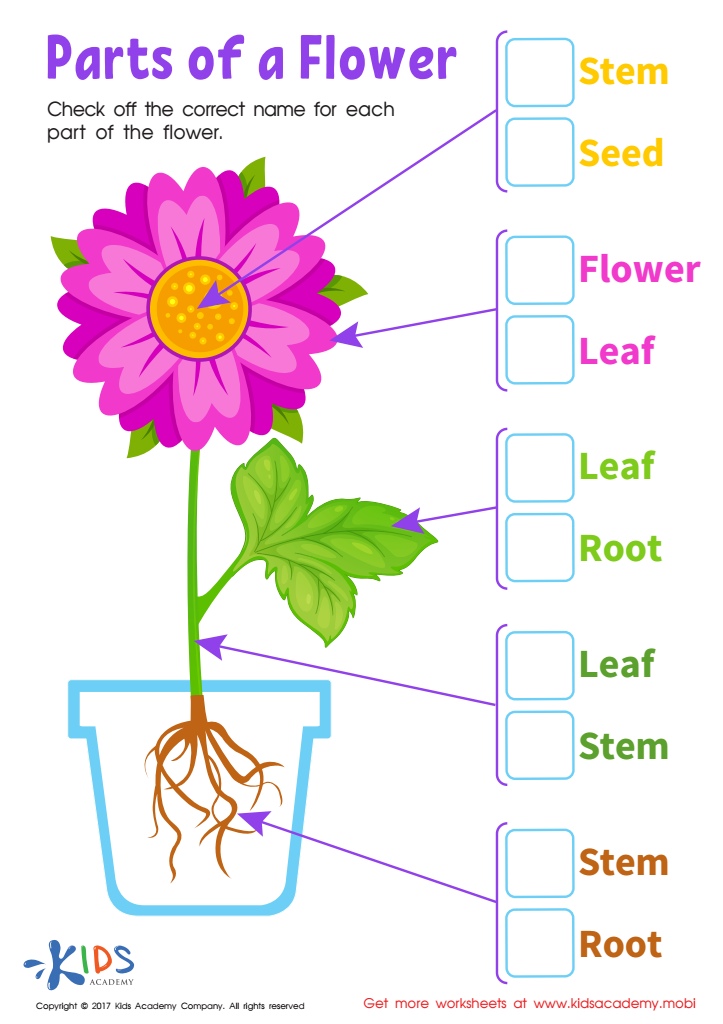Understanding flower anatomy Worksheets for Kids
1 filtered results
-
From - To


Parts Flower Printable
Question/Answer
Why is the Understanding flower anatomy skill important for Grade 1 students?
Understanding flower anatomy in Grade 1 fosters early scientific curiosity and lays the foundation for basic biology concepts. It helps students learn about plant life cycles and their role in the environment, encourages observational skills, and promotes an appreciation for nature. This knowledge is crucial for developing critical thinking and understanding the interconnectivity of ecosystems from a young age.
How to test a Grade 1 student’s Understanding flower anatomy skills?
To test a Grade 1 student's understanding of flower anatomy, use simple, hands-on activities such as having them label parts of a flower diagram (petal, stem, leaf) or assemble a flower model. Incorporate clear visuals and tangible items like real flowers for them to observe and identify parts. Keep instructions and questions straightforward to match their learning level.
How does the mastery of the Understanding flower anatomy skill affect a student's performance at an early age?
Mastery of Understanding flower anatomy at an early age positively impacts a student's performance by enhancing observational skills, increasing vocabulary related to biology, fostering a deeper appreciation for plant life, and laying a foundational understanding of biological processes. This early exposure can spark interest in science, encourage curiosity, and improve overall academic performance by integrating interdisciplinary learning experiences.

 Assign to the classroom
Assign to the classroom





.jpg)






